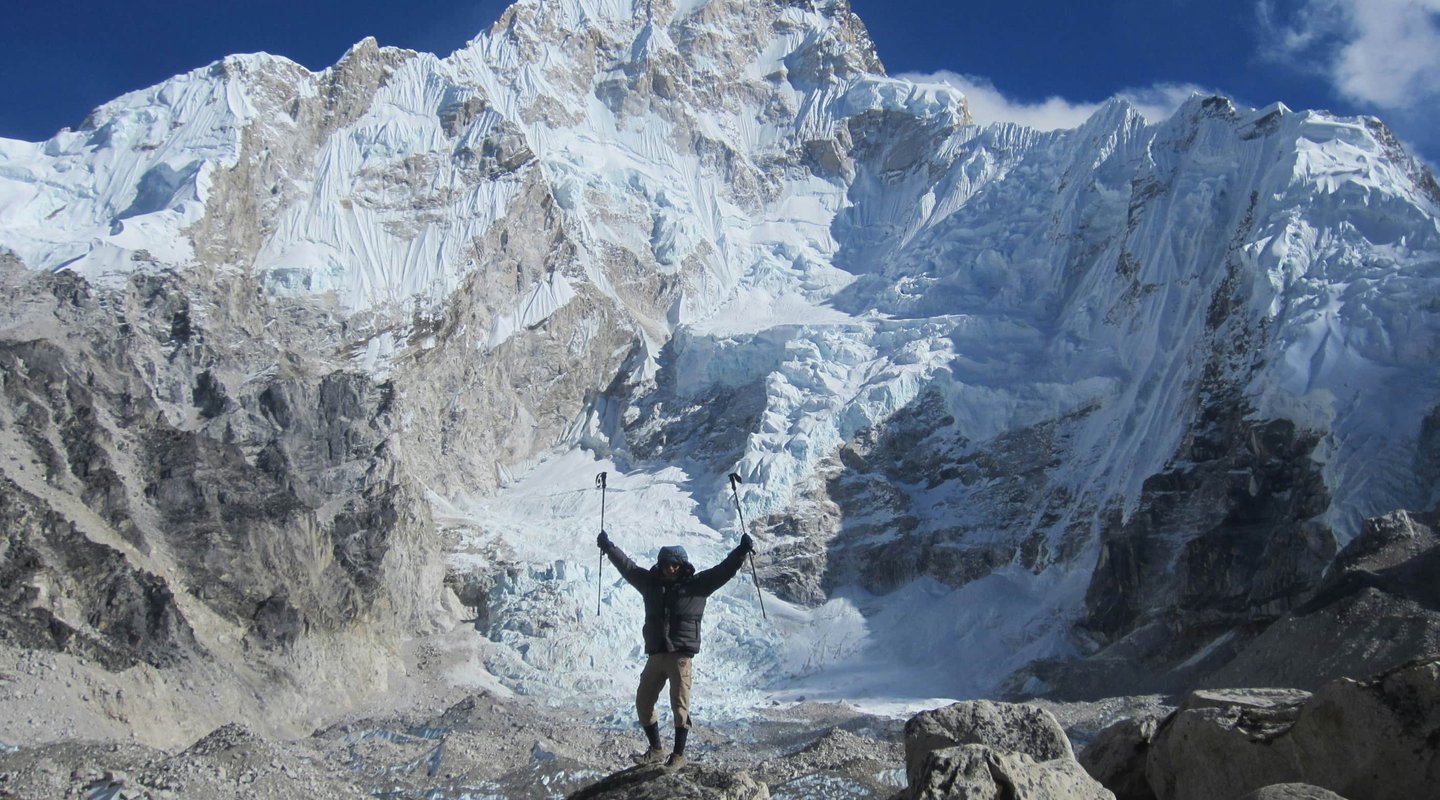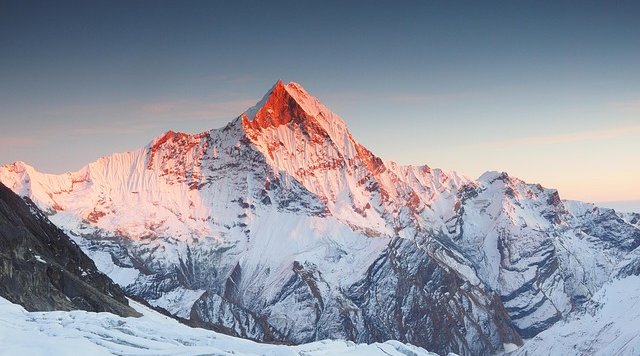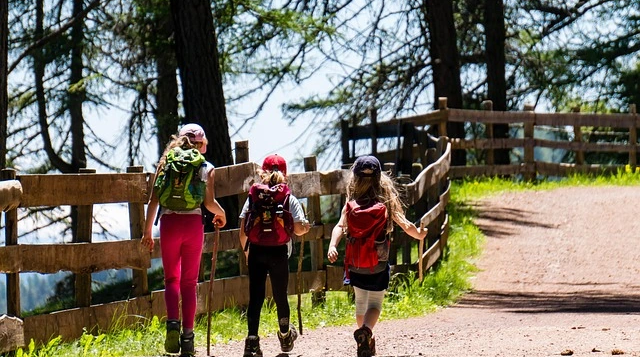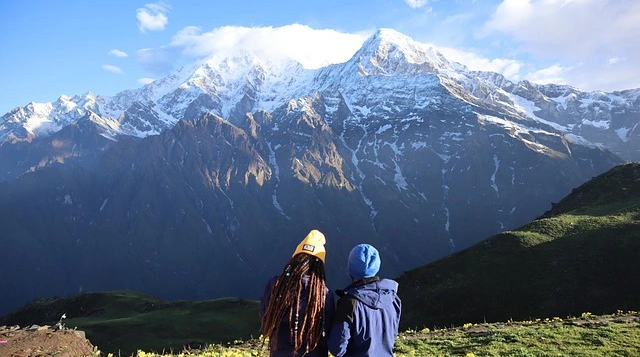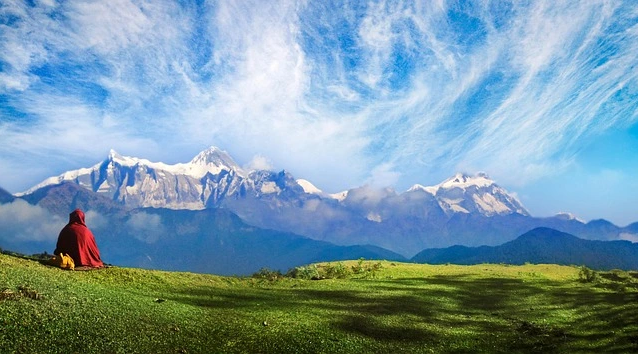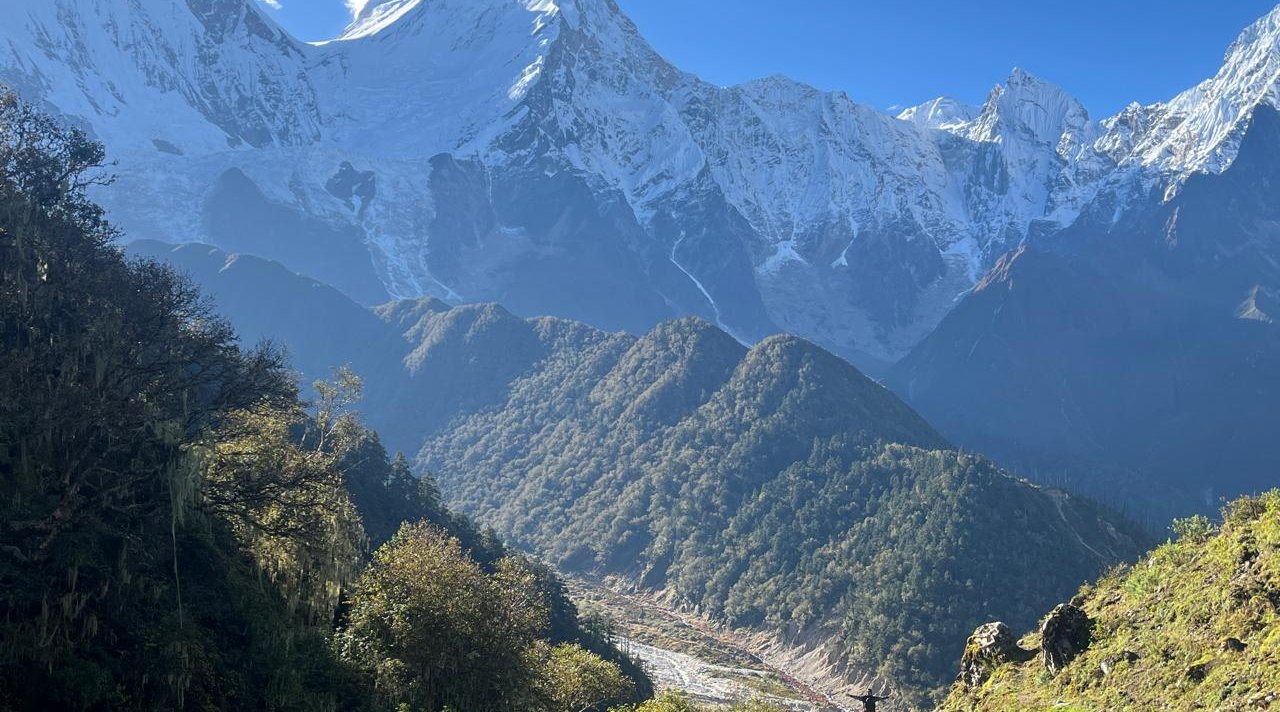Planning the best time to do the Gokyo Cho La Pass trek requires understanding how Nepal's distinct seasons transform this spectacular Himalayan journey. This comprehensive guide examines every seasonal aspect—from Gokyo Lakes weather by month to Cho La Pass snow conditions—helping you choose the perfect window for your adventure. Whether you're drawn to spring's rhododendron blooms or autumn's crystal-clear mountain views, understanding seasonal variations in weather, trail conditions, and logistics ensures your trek becomes an unforgettable experience rather than an endurance test.
An Overview: What Defines the "Best" Time?
Understanding Your Goals (Seasonality vs. Experience)
Determining when to do the Gokyo trek depends on balancing four critical factors that shift dramatically with Nepal's seasons. Your ideal timing emerges from understanding how weather patterns, crowd dynamics, seasonal costs, and logistical considerations align with your personal trekking goals.
Key Decision Factors:
- Weather stability: Temperature ranges from -20°C in winter to 20°C in spring/autumn at lower elevations
- Mountain visibility: Clear views essential for Gokyo trek photography vary from 95% clarity in autumn to 30% during the monsoon
- Trail accessibility: Cho La Pass snow conditions can close the route from December through February
- Crowd levels: Teahouse availability ranges from guaranteed bookings needed in October to empty lodges in January
- Flight reliability: Lukla flight cancellations increase 40% during the monsoon season
- Budget considerations: Costs fluctuate 30-50% between peak autumn and quiet winter seasons
- Physical difficulty: Ice and snow add technical challenges during the winter months
- Cultural experiences: Festival seasons bring unique cultural interactions, but busier trails
Spring (March - May): The Blooming Season
Weather & Temperature
Spring trekking Everest region offers increasingly stable weather as winter transitions to pre-monsoon conditions. March begins cool and crisp, gradually warming through May as the monsoon approaches.
Temperature Patterns:
- Namche Bazaar (3,440m): Day 10-15°C, Night -2 to 5°C
- Gokyo Village (4,790m): Day 5-10°C, Night -10 to -5°C
- Cho La Pass (5,420m): Day -5 to 5°C, Night -15 to -10°C
- Morning frost: Common until mid-April, especially above 4,000m
- Afternoon clouds: Build from late April, typically after 2 PM
- Precipitation: Minimal until May, increasing pre-monsoon showers
- Wind patterns: Generally calm mornings, afternoon breezes are common
- UV intensity: Extreme due to altitude and snow reflection
Pros & Cons of Spring Trekking
Spring presents Gokyo Cho La Pass in spring as nature awakens from winter's grip, painting the landscape with spectacular colors while maintaining reasonable weather stability.
Spring Advantages:
- Rhododendron forests explode with pink, red, and white blooms between 2,800-4,000m
- Extended daylight: 12-13 hours provides flexible trekking schedules
- Warming temperatures: Comfortable daytime hiking without extreme cold
- Wildlife activity: Blue sheep, Himalayan tahr, and birds become more visible
- Snow melt: Trails clear progressively, improving accessibility
- Moderate crowds: Less congested than the autumn peak season
- Cultural festivals: Witness local Sherpa celebrations and monastery events
- Stable weather: Generally predictable conditions through April
Spring Challenges:
- Lingering snow: Early March may require crampons on Cho La Pass
- Afternoon haze: Reduces distant peak visibility from late April
- Variable conditions: Weather transitions can be unpredictable
- Increasing clouds: May brings pre-monsoon buildup
- Busy lower trails: Popular sections see moderate traffic
- Allergy concerns: Pollen affects sensitive individuals
- Muddy sections: Snow melt creates slippery trail portions
Packing for Spring
Your spring Gokyo trek packing list for monsoon preparation requires versatile layering to handle temperature variations from warm valleys to frigid passes.
Essential Spring Gear:
- Base layers: 2 sets of moisture-wicking thermal underwear
- Insulation: Medium-weight fleece jacket and down jacket (600+ fill)
- Shell layers: Waterproof jacket and pants for afternoon showers
- Trekking clothes: 3 quick-dry shirts, 2 trekking pants
- Headwear: Sun hat, warm beanie, buff for versatility
- Gloves: Liner gloves plus insulated gloves for mornings
- Footwear: Broken-in boots, camp shoes, gaiters for snow sections
- Sleeping: 3-season bag rated to -10°C
- Sun protection: SPF 50+ sunscreen, lip balm, glacier glasses
- Trekking poles: Essential for stability on variable terrain
- Microspikes: Recommended for early March departures
Autumn (September - November): The Peak Season
Weather & Visibility
The Gokyo Cho La Pass best season arrives with autumn's legendary visibility Himalaya, delivering postcard-perfect conditions that draw trekkers worldwide.
Autumn Climate Characteristics:
- Crystal-clear skies: 95% visibility days in October
- Stable pressure: Consistent high-pressure systems dominate
- Temperature ranges: Predictable daily patterns are ideal for trekking
- Namche Bazaar: Day 12-18°C, Night 0-5°C
- Gokyo Village: Day 5-12°C, Night -8 to -3°C
- Cho La Pass: Day -2 to 8°C, Night -12 to -8°C
- Precipitation: Virtually none after mid-September
- Wind conditions: Light morning breezes, calm afternoons
- Humidity: Low levels enhance comfort and visibility
Pros & Cons of Autumn Trekking
Autumn delivers optimal Gokyo trek photography conditions, though popularity brings logistical challenges requiring planning.
Autumn Advantages:
- Spectacular visibility: Unobstructed views of Everest, Lhotse, Makalu, Cho Oyu
- Perfect weather: Stable conditions minimize weather-related delays
- Dry trails: Excellent traction and safety on all sections
- Festival season: Experience Dashain and Tihar celebrations
- Reliable flights: Minimal Lukla flight cancellations
- Full services: All teahouses and facilities are operational
- Social atmosphere: Meet trekkers from around the world
- Ideal photography: Golden light and clear peaks create stunning images
Autumn Challenges:
- Peak crowds: October sees maximum trail congestion
- Accommodation pressure: Teahouse availability requires booking
- Higher prices: 20-30% premium on services
- Busy viewpoints: Popular sunrise spots become crowded
- Trail bottlenecks: Cho La Pass can experience queues
- Limited flexibility: Changing itineraries becomes difficult
- booking essential: Flights fill months ahead
The Importance of Booking Ahead
Autumn's popularity demands strategic planning to secure your Gokyo Cho La Pass trek cost within budget while ensuring availability.
Booking Timeline:
- 6 months ahead: International flights for the best prices
- 4 months ahead: Lukla flights to secure seats
- 3 months ahead: Trek operator for group discounts
- 2 months ahead: Travel insurance with altitude coverage
- 1 month ahead: Final gear purchases and preparation
- Pre-book teahouses: Essential for the October peak period
- Guide/porter arrangements: Quality staff book early
- Permit processing: Allow 2-3 days in Kathmandu
Monsoon (June - August): The Quiet Season
Weather & Trail Conditions
Understanding monsoon trails Gokyo requires accepting daily rainfall patterns while appreciating the dramatic landscape transformation this season brings.
Monsoon Characteristics:
- Daily rainfall: 2-6 hours, typically afternoon/evening
- Cloud cover: 70-80% most days
- Temperature: Warmer but humid conditions
- Namche Bazaar: Day 15-20°C, Night 5-10°C
- Gokyo Village: Day 8-15°C, Night 0-5°C
- Trail conditions: Muddy, slippery, stream crossings swell
- Visibility: Limited to morning windows
- Leeches: Present below 3,000m elevation
- Vegetation: Lush green valleys, wildflowers bloom
Pros & Cons of Monsoon Trekking
Monsoon offers unique Gokyo Lakes weather by month experiences for adventurous trekkers seeking solitude and dramatic landscapes.
Monsoon Advantages:
- Minimal crowds: Enjoy peaceful trails and genuine local interactions
- Dramatic skies: Spectacular cloud formations and light
- Lush landscapes: Valleys transform into emerald green
- Wildflowers: Alpine meadows burst with color
- Lower prices: 30-40% discounts on accommodation
- Cultural immersion: More time with local communities
- Unique photography: Misty mountains, dramatic weather
- No booking: Flexibility in itinerary changes
Monsoon Challenges:
- Limited visibility: Mountain views are rare and unpredictable
- Flight disruptions: 40% chance of delays/cancellations
- Slippery trails: Increased fall risk requires caution
- River crossings: Some bridges may be damaged
- Leech zones: Below 3,000m requires precautions
- Gear management: Everything stays damp
- Limited services: Some teahouses close seasonally
- Pass conditions: Cho La may be dangerous or impassable
Lukla Flights & Logistics
Managing Lukla flight cancellations during the monsoon requires flexibility and contingency planning for successful trek completion.
Flight Management Strategies:
- Buffer days: Add 2-3 extra days for weather delays
- Early morning flights: Book first flights for better success
- Alternative airport: Consider Manthali (Ramechhap) during peak monsoon
- Helicopter options: Budget for emergency evacuation if needed
- Travel insurance: Ensure coverage for weather delays
- Flexible tickets: Book changeable international flights
- Local SIM card: Stay updated on weather conditions
- Patience mindset: Accept delays as part of monsoon trekking
Winter (December - February): The Adventure Season
Weather & Extreme Cold
Winter transforms the region into a pristine wonderland where the Ngozumpa glacier conditions and frozen Gokyo lakes' reflections create otherworldly beauty.
Winter Extremes:
- Temperature ranges: Severe cold dominates all elevations
- Namche Bazaar: Day 5-10°C, Night -10 to -5°C
- Gokyo Village: Day -5 to 5°C, Night -20 to -15°C
- Cho La Pass: Day -10 to -5°C, Night -25 to -20°C
- Wind chill: Reduces perceived temperature by 5-10°C
- Snowfall: Periodic storms deposit 10-30cm
- Daylight hours: Limited to 10-11 hours
- Clear skies: 80% of days offer excellent visibility
- Ice formation: Lakes freeze completely by January
Pros & Cons of Winter Trekking
Winter delivers unparalleled solitude for those equipped to handle Cho La Pass snow conditions and extreme cold.
Winter Advantages:
- Complete solitude: Encounter few other trekkers
- Pristine scenery: Fresh snow creates magical landscapes
- Crystal visibility: Cold air provides exceptional clarity
- Frozen lakes: Walk on the Gokyo Lakes ice formations
- Wildlife sightings: Animals descend to lower elevations
- Authentic experience: Genuine interaction with locals
- Photography paradise: Dramatic light and virgin snow
- Lowest prices: Maximum discounts on all services
Winter Challenges:
- Extreme cold: Frostbite risk requires vigilance
- Pass closure: Cho La is often impassable without technical skills
- Limited services: Many teahouses close seasonally
- Shorter days: Reduced trekking hours
- Technical difficulty: Crampons and ice axes are necessary
- Altitude challenges: Cold intensifies altitude effects
- Emergency risks: Evacuation becomes more complex
- Gear requirements: Specialized equipment is essential
Required Gear & Safety
Winter demands a comprehensive Gokyo trek packing list preparation with specialized equipment for extreme conditions.
Essential Winter Equipment:
- Base layers: 3 sets expedition-weight thermals
- Insulation: Expedition down jacket (800+ fill), fleece layers
- Shell system: Professional-grade waterproof/breathable layers
- Extremity protection: Expedition mittens, balaclava, face mask
- Footwear: Insulated boots, crampons, gaiters
- Sleeping system: -25°C rated bag, insulated pad
- Technical gear: Ice axe for Cho La Pass crossing
- Emergency items: Bivy sack, emergency shelter
- Navigation: GPS device, detailed maps
- First aid: Comprehensive kit including frostbite treatment
- Communication: Satellite phone or emergency beacon
Seasonal FAQs: Answering Trekkers' Top Questions
Is Cho La Pass Dangerous?
Understanding seasonal risk factors helps assess whether Is Cho La Pass is dangerous for your skill level and experience.
Seasonal Danger Assessment:
- Spring (March-May): Moderate risk—lingering ice requires crampons early season, afternoon snow possible
- Autumn (September-November): Low risk—dry, stable conditions ideal for crossing
- Monsoon (June-August): High risk—wet rocks, poor visibility, potential rockfall
- Winter (December-February): Very high risk—deep snow, ice, extreme cold, technical climbing may be required
- Key safety factors: Weather forecasts, proper equipment, an experienced guide, and physical fitness
- Turnaround criteria: Poor visibility, fresh snowfall, extreme wind, altitude sickness symptoms
- Success rates: Autumn 95%, Spring 85%, Winter 50%, Monsoon 60%
Are Teahouses Open All Year?
Teahouse availability varies significantly by season and elevation, affecting trek planning and comfort levels.
Seasonal Operations:
- Peak season (Oct-Nov, Mar-May): All teahouses fully operational with complete menus
- Shoulder season (Sep, Dec): Most open with reduced services and limited menus
- Monsoon (Jun-Aug): 70% operational, basic meals only
- Deep winter (Jan-Feb): Only 30-40% open above 4,000m
- Gokyo village: 2-3 lodges remain open year-round
- Emergency shelter: Basic rooms are usually available even in closed teahouses
- Advance notice: Contact lodges directly during the off-season
- Self-sufficiency: Carry emergency food and cooking equipment in winter
Is it Safe to Trek Solo in the Off-Season?
Solo trekking safety depends heavily on experience, preparation, and seasonal conditions affecting the Gokyo trek for beginners.
Solo Trekking Considerations:
- Recommended seasons: Autumn and late spring offer the safest solo conditions
- Avoid solo: Winter and monsoon present significant solo risks
- Experience required: Previous high-altitude experience essential
- Navigation skills: GPS and map reading are crucial during poor visibility
- Emergency preparedness: Satellite communication device mandatory
- Local guide benefits: Cultural insight, safety, route finding
- Registration: Check in with local authorities and lodges
- Insurance: Comprehensive coverage, including helicopter evacuation
How to Acclimatize in Different Seasons?
Proper altitude acclimatization days remain crucial regardless of season, with cold temperatures affecting acclimatization rates.
Seasonal Acclimatization Strategies:
- Standard schedule: Namche (2 nights), Dingboche/Tengboche (1 night), Gokyo (2 nights)
- Winter modifications: Add an extra day due to cold stress on the body
- Monsoon adjustments: Maintain schedule despite weather delays
- Hydration challenges: Winter requires conscious effort to drink water
- Sleep quality: Cold affects sleep, impacting acclimatization
- Climb high, sleep low: Practice remains essential all seasons
- Warning signs: Monitor teammates closely in extreme conditions
- Descent protocol: Immediate descent for severe symptoms regardless of season
Final Verdict: How to Choose Your Perfect Season
Your Personal Planning Matrix
Select your ideal best time to do Gokyo Cho La Pass trek by matching seasonal characteristics with your priorities and experience level.
Quick Season Selection Guide:
AUTUMN (September-November)
- Best for: First-time trekkers, photographers, social trekkers
- Weather: Exceptional—stable and clear
- Crowds: Very high (October peak)
- Cost: Highest prices (20-30% premium)
- Difficulty: Standard—dry trails, good conditions
- Booking: Essential 3-4 months advance
- Photography: Outstanding mountain views
- Cultural: Festivals and busy teahouses
SPRING (March-May)
- Best for: Nature lovers, moderate crowd preference
- Weather: Good—warming temperatures, some clouds
- Crowds: Moderate to high
- Cost: Standard pricing
- Difficulty: Moderate—some snow early season
- Booking: Recommended 2-3 months advance
- Photography: Rhododendrons and good mountain views
- Cultural: Local festivals, active villages
WINTER (December-February)
- Best for: Experienced trekkers, solitude seekers
- Weather: Clear but extremely cold
- Crowds: Minimal
- Cost: Lowest prices (40-50% discounts)
- Difficulty: High—technical skills needed
- Booking: Not required
- Photography: Pristine snow landscapes
- Cultural: Intimate local interactions
MONSOON (June-August)
- Best for: Adventure seekers, budget travelers
- Weather: Wet, limited visibility
- Crowds: Very low
- Cost: Low prices (30-40% discounts)
- Difficulty: High—slippery trails
- Booking: Not required
- Photography: Dramatic skies, green valleys
- Cultural: Authentic village life
Decision Framework:
- Assess your experience level: Beginners choose autumn, experts consider winter
- Define priorities: Views vs. solitude vs. budget vs. comfort
- Consider fitness: Cold and altitude combine to increase difficulty
- Plan flexibility: Off-season requires schedule buffers
- Budget realistically: Include contingency for delays and equipment
- Book accordingly: Peak season needs advance planning
The Ultimate Recommendation:
For most trekkers, late September to early November provides optimal conditions for the Gokyo Cho La Pass trek. This period balances excellent weather, full services, and reliable logistics. However, experienced trekkers seeking solitude should consider early December or late February for a transformative winter experience. Spring offers the best compromise between good conditions and moderate crowds, particularly in April. Only attempt monsoon if you prioritize cultural immersion over mountain views and have flexible travel plans.
Your perfect season ultimately depends on personal priorities—whether you seek photographic perfection, cultural immersion, physical challenge, or spiritual solitude. The Gokyo Cho La Pass trek rewards visitors in every season, each offering its unique magic to those prepared for its specific demands.
Ready to experience the magic of Gokyo Lakes and conquer the Cho La Pass?
Don't let another season pass without embarking on this life-changing Himalayan adventure. Our expert team specializes in crafting personalized Gokyo Cho La Pass treks tailored to your chosen season, fitness level, and travel goals.
Book your Gokyo Cho La Pass Trek today and receive:
- Free seasonal gear consultation
- Flexible booking policies for weather delays
- Expert guides familiar with all seasonal conditions
- Small group sizes for personalized attention
Whether you're drawn to autumn's crystal-clear peaks, spring's rhododendron forests, or winter's pristine solitude, we'll ensure your trek becomes the adventure of a lifetime. Contact our Himalayan specialists today to discuss your perfect trekking season and secure your spot on this extraordinary journey.
Transform your trekking dreams into footprints on the world's most spectacular trails. The mountains are calling—will you answer?

